- Administrator
- Albums and Singles
“We are what we pretend to be, so we must be careful what we pretend to be.”
A modern-day revenge tragedy in six parts. Symmetrical, finespun, almost courtly; but quick-tempered with it, and far from blood-shy.
A picture emerges: domestic disturbances, pissing on the compost heap, noise complaints from hateful neighbours. Sulking, pouting, goading – a hierarchy of needs. Cold leaves and Christmas. Body-clocks betrayed. Staying up late to collect bottles to smash in the carpark across the road. Marijuana and make-believe. Cracking this thin ice with deft stomping aplomb.
Due out December 15, 2014, in an edition of 300. Recommended if you carry a torch for AC Marias, Brenda Ray, General Strike, The Poems, Robert Storey or other such angels of shut-in dub dysfunction.
More information can be found here.

Read More
- Administrator
- Albums and Singles
Faith In Strangers was written and produced between January 2013 and June 2014, and was edited and sequenced in late July this year. Making use of on an array of instruments, field recordings, found sounds and vocal treatments, it's a largely analogue variant of hi-tech production styles arcing from the dissonant to the sublime.
The first two tracks recorded during these early sessions bookend the release, the opener "Time Away’"featuring Euphonium played by Kim Holly Thorpe, and last track "Missing," a contribution by Stott’s occasional vocal collaborator Alison Skidmore, who also appeared on 2012's Luxury Problems. Between these two points, Faith In Strangers heads off from the sparse and infected "Violence" to the broken, downcast pop of "On Oath" and the motorik, driving melancholy of "Science & Industry" – three vocal tracks built around that angular production style that imbues proceedings with both a pioneering spirit and a resonating sense of familiarity. Things take a sharp turn with "No Surrender"- a sparkling analogue jam making way for a tough, smudged rhythmic assault, while "How It Was" refracts sweaty Warehouse signatures and "Damage" finds the sweet spot between RZA's classic Ghost Dog and Terror Danjah at his most brutal. Faith in Strangers is next and offers perhaps the most beautiful and open track here: its vocal hook and chiming melody bound to the rest of the album via the almost inaudible hum of Stott's mixing desk. It provides a haze of warmth and nostalgia that ties the nine loose joints that make up the LP into the most memorable and oddly cohesive of Stott's career to date, built and rendered in the spirit of those rare albums that straddle innovation and tradition through darkness and light.
More information can be found here.

Read More
- Administrator
- Albums and Singles
Sea Island is a collection of new material composed and recorded over the past two years. While many of these compositions were performed live extensively prior to recording, others were constructed in the studio and are being heard for the first time here. Musically, the album represents a range of compositional approaches. Murky, densely textured depths of sound are explored with subtle pulses and pings woven within, contrasted with composed or improvised moments of acoustic instrumentation making a move into the foreground. Certain tracks on Sea Island such as album opener "Ahull" make rhythm their focus by exploring subtle polyrhythms and investigating colliding moments of repetition and variation.
Though staunchly electronic at its core, instruments such as vibraphone and piano make appearances, and layers of live musicality, improvisation and detail appear in the looped and layered beds of manipulated sound recordings. A varied cast of players appear in the loscil ensemble, some familiar collaborators from the past such as Jason Zumpano on rhodes and Josh Lindstrom on vibraphone, and others new to the mix such as Fieldhead's Elaine Reynolds who provides layered violin on "Catalina 1943," and Ashley Pitre contributing vocals on Bleeding Ink. Seattle pianist Kelly Wyse, who collaborated with loscil on his 2013 edition of piano-centric reworks Intervalo, performs on the tracks "Sea Island Murders" and "En Masse."
More information can be found here.

Read More
- Administrator
- Albums and Singles
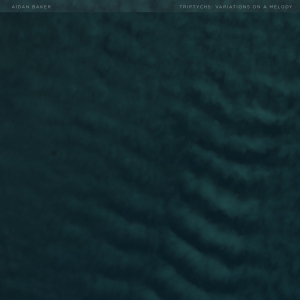 Aidan Baker is so prolific that his quality control might be open to question, except any criticism is disarmed by the near-impossibility of keeping pace with his myriad collaborations and solo projects. FortunatelyTriptychs would stand out in any discography. Inspired by Satie’s Gymnopédies and "furniture music" it is full of precise instrumentation which allows the music space to breathe and creates a serene, and meditative, air.
Aidan Baker is so prolific that his quality control might be open to question, except any criticism is disarmed by the near-impossibility of keeping pace with his myriad collaborations and solo projects. FortunatelyTriptychs would stand out in any discography. Inspired by Satie’s Gymnopédies and "furniture music" it is full of precise instrumentation which allows the music space to breathe and creates a serene, and meditative, air.
The concept is that a very simple and slow melody is repeated three times, with a harmonic line added for each repetition, resulting in a three part harmony. This progression makes for a simplicity and inevitability that are exquisite and comforting. Using a range of solo instruments provide variety and contrast.
The two versions of "Triptych One" feature Aidan Baker on electric and then acoustic 12-string guitars. From the off, delicate notes hang in the air, and a calm, deliberate, almost snail’s pace is set. Leah Buckareff’s electric bass on "Triptych Two" is a study in brooding isolation and David Nesselhauf’s double bass version even heavier and more doleful.
Baker returns on melodica for "Triptych Three" (throbbing and wheezing like a lonely, sleeping astronaut dreaming of an early morning cigarette). It is something of a masterstroke to match that with Katie English’s flute translation (as bright and fresh as a glistening row of icicles hanging from streetlights on a winter night.)
Four plaintive and mesmerizing versions of "Triptych Four" feature Rose Bolton and Peter Broderick on violins, Angela Chan on viola and Julia Kent on cello. Each of these maintain a mournful and serene mood. The album ends with three renditions of the poignant "Triptych Five" with Felicia Atkinson on organ, and then Broderick and Aki Yakamoto both shower piano notes, falling and rippling like raindrops landing on the middle of a wide placid lake.
Triptychs is dazzling, restrained, emotionally engaging, and ultimately so self-contained that attempts to describe it with subjective imagery merely approximate, or dilute, its power. At the same time, though, it is conducive to such intense flights of imagination. Each of these pieces are around three minutes long and all are wonderful. But heard from start to finish, the album reveals itself to be much more than the sum of its parts. If I could only give everyone one 2014 release, Triptychs is that gift.
 
Read More
- Administrator
- Albums and Singles
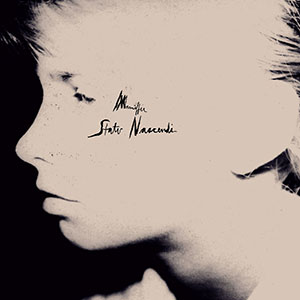 This may be the first album from partners in music (and life) Faith Coloccia and Aaron Turner since 2011, but the two have been anything but stagnant in those past few years. Collaborations with other artists as Mamiffer and side projects abound between these two restless artists, and the duo are even hesitant to consider this the proper third album. Regardless of how it officially stands in their overall canon, Statu Nascendi is a powerful work that strips the Mamiffer sound down to its organic core.
This may be the first album from partners in music (and life) Faith Coloccia and Aaron Turner since 2011, but the two have been anything but stagnant in those past few years. Collaborations with other artists as Mamiffer and side projects abound between these two restless artists, and the duo are even hesitant to consider this the proper third album. Regardless of how it officially stands in their overall canon, Statu Nascendi is a powerful work that strips the Mamiffer sound down to its organic core.
Previous Mamiffer works have existed in the nebulous space between metal, ambient and noise, but this record has the duo focusing more on moody, spacious styles.Turner’s guitar throughout these four pieces is kept low in the mix, occasionally drifting into dissonance such as on the lengthy "Enantiodromia."Even here, however, it stays under tight control and instead of blasting aggressively it enriches a hazy, shoegaze type drone.Paired with the sounds of an organ, it melds into a beautiful fog.
The first piece, "Caelestis Partus," is the most stand-alone, and one of the more traditional sounding ones in their overall discography.Turner's guitar is pushed deep and isolated in the mix, awash in cavernous reverb.Delicate vocals appear a few minutes in, resulting in an uplifting and more inviting accompaniment to the otherwise bleak and dour guitar sound, which builds to a darker, dramatic conclusion.
The focus of the album is Faith Coloccia's vocals, which are utilized on each piece on the album.Her voice is beautiful, yet somber, and contrasts the darker instrumental passages.Blended tastefully to be the centerpiece without being overwhelming, her voice gives the album a certain English pastoral folk sound.With its hint of medieval madrigals and bleak accompaniment, there is a beautiful yet mildly sinister sensibility throughout the pieces, most overtly on the closing "Flower of the Field."
Coloccia's trademark piano has even been scaled back to emphasize mood over force.It appears heavily on "Mercy," but in a comparably restrained manner than her percussive sound heard on previous Mamiffer records.The piano and vocals remain the focus, however, with guitar being cautiously added to flesh out the piece nicely.
If Coloccia and Turner are considering this to not be the third album proper, but a transitional entry until that is released sometime next year, I am quite curious how the new work will sound.The reductionist approach to Statu Nascendi works extremely well, distilling the essence of the Mamiffer sound down to its most essential elements.If the new album is a new direction entirely or an even more stripped down work, I am sure it will be a brilliant work either way.
samples:
 
Read More
- Administrator
- Albums and Singles
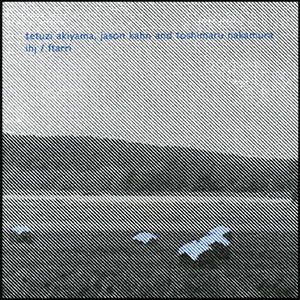 Culled from two 2012 performances in Japan, the two pieces that make up this album are built from the most simple of arrangements. The way this improvisational trio put these basic instruments together, however, is what makes this album excel. Not a simple or easy listen, it succeeds in that difficult abstraction.
Culled from two 2012 performances in Japan, the two pieces that make up this album are built from the most simple of arrangements. The way this improvisational trio put these basic instruments together, however, is what makes this album excel. Not a simple or easy listen, it succeeds in that difficult abstraction.
Consisting of Tetuzi Akiyama on guitar, Jason Kahn playing synth, and Toshimaru Nakamura controlling a no-input mixing board, the instrumentation used by these three artists is sparse to say the least.On "ftarri", the two electronic instruments set the stage, from synth outbursts and detuned radio static (which is, I assume, Nakamura’s mixing board).Akiyama’s guitar drops in, first plucked and then bowed, played erratically to become an almost percussive, banging instrument.
There is an overall cut-up, quick shift type sound to the piece, with the trio quickly switching up styles and approaches.Shrill electronic swells are pulled away to silence just before they become unbearable, and moments that almost resemble conventional rhythmic progressions dissolve just as quickly as they appear.The middle section is especially heavy on the quieter moments, which are punctuated with harsher blasts towards the end of the performance.
The other piece, "ihj" (recorded at the International House of Japan) has the trio dialing back the hyper-kinetic nature of the previous performance a bit.On the whole it is less about the quick changes and jump cuts, and instead it has the trio working in more droning, sustained moments.Evident from the opening low-end tone, the performance lurks more than it jumps.
That is not to say that the piece is boring by any means:the trio still work their distinctly different instruments wonderfully, keeping a flow going throughout the performance.Akiyama’s ugly guitar scrapes cut through that opening electronic drone pretty quickly, and ultrasonic squeals pierce everything effectively.There is just a greater sense of sustain and force, with less introspective, silent moments.Grinding guitar and flirtations with synth melodies appear frequently, but dissonance and abstraction is still the dominant feature.
The sort of free improvisation that this trio works with is not the most accessible, but I personally find it captivating when it is done this well.The variety of noises coaxed from two conventional and one unconventional instrument only occasionally sound like they "should", being bent and manipulated by their players.There are moments that feel a bit directionless, like three individuals making noises independent of each other, but such is the nature of free improvisation.More often than not, each of the players compliment each other greatly, to result in a strange, sometimes confusing, but almost always fascinating work.
samples:
 
Read More
- Administrator
- Albums and Singles
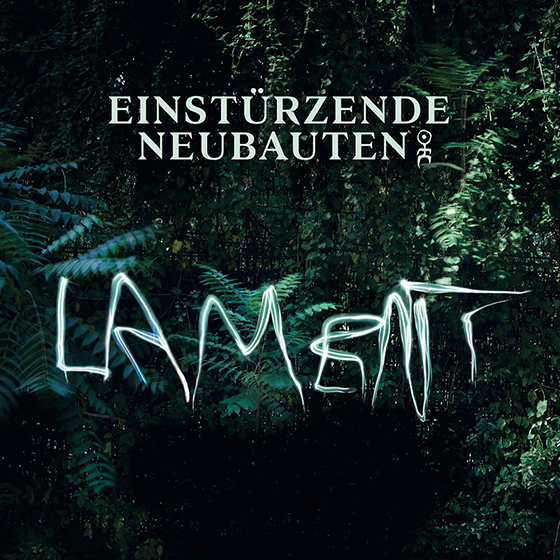 This month, Germany marks two anniversaries of note. The 100th anniversary of the start of the first World War represents one of the darker moments of their history whereas the 25th anniversary of the fall of the Berlin Wall represents a beacon of hope. Einstürzende Neubauten were there for the latter and channel the energy that ran through the divided city of Berlin even still. Through this new project, they connect the dots between the conflicts of today and those of the past while marking the passing of all those who have fallen under the relentless combat and struggle that has plagued mankind since its beginning.
This month, Germany marks two anniversaries of note. The 100th anniversary of the start of the first World War represents one of the darker moments of their history whereas the 25th anniversary of the fall of the Berlin Wall represents a beacon of hope. Einstürzende Neubauten were there for the latter and channel the energy that ran through the divided city of Berlin even still. Through this new project, they connect the dots between the conflicts of today and those of the past while marking the passing of all those who have fallen under the relentless combat and struggle that has plagued mankind since its beginning.
For decades, the majority of art surrounding the first World War centered around the horror and tragedy of the trenches. Poets like Siegfried Sassoon and Wilfred Owen relayed the realities of the front line in verse and novels like Erich Remarque’s All Quiet on the Western Front and Sebastian Faulks’s Birdsong provided chilling insights (either first hand or historical) into the psychology of soldiers on both sides; their fears, hopes and indifference made word. In music, one only has to look at Benjamin Britten’s War Requiem for a haunting elegy to all wars and all the loss contained therein. Yet, in recent years, alternative takes on the first World War have permeated the arts with the Sébastien Japrisot’s Un long dimanche de fiançailles (and Jean-Pierre Jeunet’s film adaptation) showing a more light-hearted and hopeful side to the aftermath of the Great War or Will Self’s fabulous and head-melting Umbrella, a fusion of artillery production, neuropharmacology and modernism.
It is towards Self‚Äôs end of interpretation that Einstürzende Neubauten have taken for their commissioned work Lament. Created for a site-specific performance at the Belgian city of Diksmuide, a city reduced to rubble over the course of heavy fighting during the war. Diksmuide remained a front line for four years, with the Germans and Belgian-French armies locked in a seemingly endless grind of casualties. To give an estimation of its bloodiness, the main trench just outside the city was known as the "Trench of Death" in a war that was meant to end all wars. Blixa Bargeld takes this well-worn phrase and uses it as a springboard for his own historical and artistic investigations. Bargeld maintains that wars never end, war instead just moves and constantly shifts to new locations and conditions. Indeed, it is obvious from perusing the history books that almost all conflicts are intimately related to others, from the large scale of the two World Wars to smaller threads running from civil wars to border disputes. For the instrumental "Kriegsmaschinerie" that opens Lament, Bargeld remains quiet and instead written passages are to be read at certain times during the piece. For the live performances, he holds up large cards with the lines written on them but on the recording we have to make do with the words being printed in the liner notes. Here, Bargeld insists that "War does not break out, and it is never caught or chained; it moves" while a clanging dirge comes as if from the bowels of the earth, bringing to mind classic Neubauten pieces like "Das Schaben" and "Armenia" (indeed "Armenia" being one of a handful of old songs played during the live performances of Lament).
The absurdity of war as being discrete political entities is explored in "Hymnen" and "The Nicky-Willy Telegrams." In the former, the familiar tune of "God Save the King" is played with Neubauten singing a chimera of the various national anthems of the United Kingdom, Canada and Germany – highlighting the common ancestry and living links between these countries at war with each other. On the latter, Bargeld and Alexander Hacke sing the correspondence between Kaisar Wilhelm and Tsar Nicholas, the respective leaders of Germany and Russia along with being first cousins with each other and King George of England. The conversation is sung with a bizarre autotune effect, reflecting the falseness of the sentiments contained in the telegrams (on the face of it, they claim to be looking for ways to avoid war but all the while were moving their armies into position). Between these two pieces, Neubauten show that not only does war never sleep, it does not care if both sides are really same side underneath it all.
Throughout Lament, there is a strong sense of theatre and, as with Neubauten’s theatre work during the nineties, bespoke instrumentation was built by the band to create a visual and metaphorical link between the abstract sounds and the themes. On "In Der Loopgraaf," NU Unruh uses a harp made from barbed wire as a dulcimer-like percussive instrument to accompany Paul van den Broeck’s poem about his inability to dance in the trenches and the looming weight of knowing that the open earth is one long grave for all the men stationed there. Elsewhere, Morse code and amplified crutches are employed and spent artillery shells are used as perscussion instruments. Judging from the photos in the booklet, there is even a replica of one of Luigi Russolo’s intonarumori which was created with replicating the noise of contemporary life in the 1910s (not forgetting that war was one of the chief fascinations of the Italian Futurists, with Russolo serving as a motorcyclist in the Italian army).
The plastic piping used with great effect on Perpetuum Mobile on the "statistical piece of music" "Der 1. Weltkrieg" where the time line of the war is mapped out in music with each country assigned a different pipe (all of different lengths to differentiate them by sound) and each day of the conflict counted by each beat in the song. The days that each country fought are played, resulting in a complex piece which elegantly represents the bare facts about the war: who fought when and for how long. The idea of this being statistical music stretches out into the rest of the album with Neubauten hiring an actual historian to help them research the untold stories and fine details often glossed over in coverage of the war (both historical and artistic). Bargeld has stated in interviews that he wanted to avoid the obvious stories and clichéd sources that are so often used by other artists, by working with a real historian Neubauten have certainly created something unique.
Yet, it would be unfair to think that Neubauten were avoiding the humanity and the emotional weight that goes hand in hand with the topic. The album’s centrepiece is a three movement piece which shares the album’s title. "Lament 1. Lament" is an almost abstract vocal work where the band slowly layer their voices over each other, building a river of sound from which Bargeld launches accusations of the mutual lies and love of power making war (my rough translation!). An instrumental middle movement based on the numbers making up "1918" gives way to the heart-wrenching "Lament 3. Pater Peccavi." Much like Gavin Bryar’s The Sinking of the Titanic, Neubauten combine unbelievably sad music (based on a 16th century motet written by Diksmuide’s own Jacobus Clemens non Papa) with wax cylinder recordings of a linguistics project being performed on prisoners of war. The researchers were interested in the many dialects and languages that existed in Europe at the time, asking them to recite the story of the Prodigal Son in their own language. Here the casualty of culture is laid bare, from the end of the war Europe would become better connected and homogenised with various lingua franca taking hold in each state, erasing dozens of languages from history.
It might be odd to think of a Cold War-era band from Germany being asked to mark the centenary of World War I in Belgium but when you consider Neubauten’s inspirations and the lineage of experimental art in the 20th century, it all stems from the first world war. Walter Benjamin’s art theories required the development of the kind of machinery that lead to wholesale slaughter and the bloody birth of Dada in the middle of the war; both essential forerunners to Neubauten. This runs almost in parallel with Bargeld’s thesis on war never sleeping but moving from place to place; equally the creative arts can be seemingly obliterated or vanish from somewhere, only to pop up in other places and other times when least expected.
 
Read More
- Administrator
- Albums and Singles

Vinyl reissue of Carter's 2008 "standards" album.
"Masque Femine should be regarded as a total work - much like a film, a ballet, a building, or, an altarpiece - rather than as an album of individual songs. And, its fundamental subject should not be understood to be romantic love."
Cut and mastered by Rashad Becker at D&M.
More information is available here.
Read More
- Administrator
- Albums and Singles
Since his first live performances in 2002, Sean McBride, aka Martial Canterel (who also performs as half of the duo Xeno & Oaklander), has crafted his electronic sound in a peculiar intersection between avant-garde and pop. Merging the influences of the first wave of relatively unknown minimal electronic bands in northern Europe, and seminal industrial noise bands such as Throbbing Gristle and SPK, with the smoothly stylish songcraft of early British New Wave, Martial Canterel records and performs using analogue synthesizers, sequencers and drum machines exclusively, molding electricity to fix the action of music creation in substance. The mastery of his composition technique, a second nature of harmonic complexity, along with a unique talent for melodies, enables him to manufacture gems of extreme noise pop, making use of all its unexpected ingredients.
Gyors, Lassù marks an important milestone in the evolution of Martial Canterel's music, progressing far beyond the cages of "minimal synth" and embracing the noisier qualities of its sound with a renewed urgency, a kind of thickness embodied in multiple layers using only eurorack, Serge and Roland 100 modular systems at his disposal and flushing out the entire session in one take. Sine waves are rendered into walls of guitar-like noise on songs like "And I Thought," while the stretching out and liquifaction of what were once very precise pointillistic staccato synth arpeggios are marshaled into layers of violent bliss on "Gyors/Lassù." The analogue labor and the density of sound highlight the character of continuous performance of the music, where the intertwining of the artist and his work is profoundly material in its quality. As in a modern embodiment of the potter’s wheel…the hands, the texture of clay, with ceramic material. Translated lyrically and conceptually, music performance is for time what travel represents in space, and Gyors, Lassù is the sonic rendering of McBride's wanderings between Hungary ("Bulvàr," "Budapest II") and the South of Italy ("Teano"), between vibrant rhythmic structures and melancholic instrumentals, balancing its bodily intensity with abstract experimentation against the regression of the modern listener.
More information can be found here.

Read More
- Administrator
- Albums and Singles
Starting as an imprint solely for Perc's own productions, Perc Trax has grown in recognition and confidence each year since its first release in 2004. This year Perc Trax celebrates its tenth year of existence, during which time it has released over seventy vinyl singles and six albums, hosted showcases as far away as New York and Tokyo and recently spawned the Submit and Perc Trax Ltd. sublabels.
To celebrate a decade of releasing music, Perc Trax looks to the future, releasing eleven brand new tracks from a mix of Perc Trax regulars including Truss, Forward Strategy Group, Sawf and Perc himself and names new to the label such as Clouds, Happa, Kareem, Drvg Cvltvre and Martyn Hare. These new tracks will be released as three separate vinyl EPs and will also form part of a 2xCD album. The first disc containing the new tracks, whilst the second disc is home to Perc's first commercially available DJ mix.
More information can be found here.
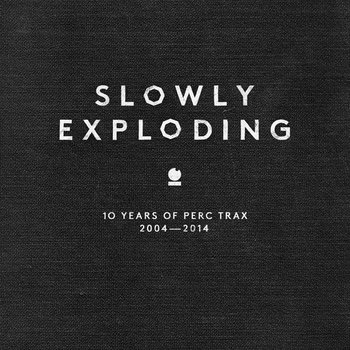
Read More
- Administrator
- Albums and Singles
Mysterious techno operative makes shock return with debut album Butterfly Effect.
Demdike Stare have released the debut album from Shinichi Atobe on their DDS label.
Atobe only has one previous record to his name: Ship-Scope, a dubby and emotive techno 12-inch that came out on the Basic Channel sublabel Chain Reaction in 2001 (that one remains highly sought-after online and was one of FACT's "25 Best Dub Techno Tracks of All Time"). He hasn't been heard from since, but some sleuthing by UK duo Demdike Stare has unearthed a full album's worth of new and archival material from the Japan-based producer.
The album is limited to 600 vinyl copies. The vinyl, CD editions, and digital version are out now.
(via Resident Advisor and FACT)

Read More

